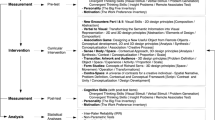Abstract
Creativity is an original cognitive ability and problem solving process which enables individuals to use their intelligence in a way that is unique and directed toward coming up with a product. Architectural education is one of the fields in which human creativity has been exhibited; because, it can be defined as a design study that correlates with other disciplines: social sciences, management, history, operational research, philosophy, graphic design, math and etc. These features which distinguish architecture from other disciplines ascribe different kind of responsibilities for architectural education; since beside technical and professional skills, an architect must have imagination and to be creative at many levels. Thus, this research aims at proving that students can be trained in creative thinking via acquiring specific skills and systematic techniques, which directly acts on design product. The study methodology depends on the concept of experimental research that targets at exposing students to creative problem solving experience via carrying out a creative training course that concerns “Consequential Creativity”. That experiment examined the potentiality of enhancing the students’ ability of viewing problems in non-traditional perspectives that counts on the systematic procedures of problem solving. Tools for assessment before and after training have been implemented. The Experiment findings proved that the students’ creative thinking skill has been clearly improved after attending the course. Therefore, training in creative thinking can be considered as independent courses or within specific architectural curricula.
















Similar content being viewed by others
Notes
de Bono wrote a series of books dedicated to creative thinking, such as: The Use of Lateral Thinking (1967), Six Thinking Hats (1985), Serious Creativity: Using the Power of Lateral Thinking to Create New Ideas (1992), How to Have Creative Ideas (2007) and many others.
Coefficient of variation (CV) is a standardized measure of dispersion of a probability distribution or frequency distribution. It is defined as the ratio of the standard deviation to the mean.
References
Almeida, L. S., Prieto, L. P., Ferrando, M., Oliveira, E., & Ferrándiz, C. (2008). Torrance test of creative thinking: The question of its construct validity. Thinking Skills and Creativity,. doi:10.1016/j.tsc.2008.03.003.
Berg, B. L., & Lune, H. (2001). Qualitative research methods for the social sciences (4th ed.). Massachusetts: Pearson Education, Limited.
Chermahini, S. A., Hickendorff, M., & Hommel, B. (2012). Development and validity of a Dutch version of the Remote Associates Task: An item-response theory approach. Thinking Skills and Creativity,. doi:10.1016/j.tsc.2012.02.003.
Darbor, K. E. (2010). Individual differences in creativity: How different processes and mind-wandering influence performance (Bachelor of Sciences with Honors in Psychology). Ann Arbor: University of Michigan. Retrieved from http://deepblue.lib.umich.edu/bitstream/handle/2027.42/79468/kedarbor.pdf?sequence=1.
De Bono, E. (1993). Serious creativity: Using the power of lateral thinking to create new ideas. New York: HarperBusiness.
De Bono, E. (1999). Six thinking hats. Canda: Penguin Books, Limited.
De Bono, E. (2010). Lateral thinking: A textbook of creativity. London: Penguin Adult.
Howard, T. J., Culley, S. J., & Dekoninck, E. (2008). Describing the creative design process by the integration of engineering design and cognitive psychology literature. Design Studies, 29(2), 21. doi:10.1016/j.destud.2008.01.001.
Jones, J. B., & Flint, L. J. (2013). The creative imperative: School librarians and teachers cultivating curiosity together: School librarians and teachers cultivating curiosity together. California: ABC-CLIO.
Kim, K. H. (2006). Can we trust creativity tests? A review of the Torrance Tests of Creative Thinking (TTCT). Creativity research journal, 18(1), 12.
Lawson, B. (2005). How designers think: The design process demystified. Massachusetts: Elsevier/Architectural.
Sefertzi, E. (2000). Creativity; Report produced for the EC funded project. StudyMode.com.
Tassoul, M. A., & Buijs, J. (2007). Clustering: An essential step from diverging to converging. Creativity & Innovation Management, 16(1), 16–26.
Vidal, R. V. V. (2006). Creative and participative problem solving—The art and the science. Informatics and Mathematical Modelling (IMM), Technical University of Denmark. Retrieved from file:///C:/Users/Tamer_2/Downloads/imm4901.pdf.
Wallas, G. (1926). The art of thought. Michigan: J. Cape.
Wong, Y. L., & Siu, K. W. M. (2012). A model of creative design process for fostering creativity of students in design education. International Journal of Technology and Design Education,. doi:10.1007/s10798-011-9162-8.
Acknowledgments
Authors would like to express their deep appreciation for, and gratefulness to, all those who helped them in making this paper. Special thanks are to the staff members and the teaching assistants of “Visual Design and Design Fundamentals” course at Ain Shams University, Faculty of Engineering, Department of Architectural Engineering. Many thanks are also due to Associate Professor, Dr. Sabah Soliman, for her kind help with hand and thoughts. Special thanks are also due to Translator and Editor Mahi Atef Salah El-Din for her professional language proofreading.
Author information
Authors and Affiliations
Corresponding author
Rights and permissions
About this article
Cite this article
Hamza, T.S., Hassan, D.K. Consequential creativity. Int J Technol Des Educ 26, 587–612 (2016). https://doi.org/10.1007/s10798-015-9321-4
Accepted:
Published:
Issue Date:
DOI: https://doi.org/10.1007/s10798-015-9321-4




